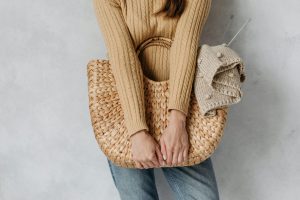Fashion as a Medium for Storytelling
Walking down the street, we are constantly bombarded with various forms of media and storytelling. From the billboards displaying the latest movie releases, to the songs blaring from passing cars, to the fashion choices of the people we pass by. Yes, you read that right, fashion. Fashion has long been recognized as a means of self-expression and creativity, but it also serves as a medium for storytelling. In this article, we will explore how fashion has evolved from being just a form of clothing to a powerful platform for telling stories and sending messages. From cultural symbolism to personal narratives, let’s delve into the world of fashion as a medium for storytelling.
The Evolution of Fashion as a Medium for Storytelling
Fashion has been a part of human civilization since the beginning of time. It started as a necessity to protect oneself from the elements, but over the years it has become much more than that. As human societies evolved, so did their way of dressing. Tribes and communities used clothing to distinguish themselves from others, to showcase their cultural identity and beliefs. This is where fashion first began to take shape as a medium for storytelling.
In the 20th century, fashion took on a whole new meaning. With the rise of the fashion industry and mass production, clothes became more accessible and affordable. Fashion trends began to change at a rapid pace, allowing individuals to use clothing to express their personal style and beliefs. From political statements to social movements, fashion became a tool for self-expression and storytelling.
The Power of Symbolism in Fashion
One of the most powerful ways fashion tells a story is through symbolism. Certain clothing items or patterns can hold strong cultural or historical significance, conveying a message without the need for words. Take for example, the iconic red cape worn by the suffragettes during their fight for women’s right to vote. This piece of clothing was chosen specifically because the color red was associated with strength and defiance, making a powerful statement without uttering a single word.
In recent years, the use of cultural symbolism in fashion has sparked important conversations on cultural appropriation and appreciation. Designers and brands are now more aware of the impact their designs can have on different cultures, and are using fashion as a means to educate and celebrate diversity.
Personal Narratives through Fashion
Aside from cultural storytelling, fashion can also serve as a platform for individual narratives. Many designers infuse their personal experiences and emotions into their collections, giving them a deeper meaning. This allows for a connection between the designer and the wearer, as the clothes tell a story that resonates with both.
Moreover, fashion bloggers and influencers have taken this concept even further. Through their social media platforms, they showcase their own personal style and use fashion as a way to share their stories and experiences. This has given fashion a more relatable and personal touch, making it more accessible to a wider audience.
Fashion as a Reflection of Society
Beyond individual and cultural storytelling, fashion also reflects the current social climate. In times of change and uncertainty, fashion has always been a way for people to express their thoughts and opinions. For example, during the current global pandemic, fashion has shifted towards comfortable and practical clothing, reflecting the shift towards a more home-based and cautious lifestyle.
This is not a new phenomenon, as in the 1960s fashion was heavily influenced by the social and political changes happening at the time. The hippie movement gave rise to a more free-spirited and bohemian fashion style, while the women’s rights movement brought about more gender-neutral and empowering clothing choices.
The Future of Fashion as a Medium for Storytelling
As fashion continues to evolve, so does its use as a medium for storytelling. With the rise of digital media and technology, fashion has a wider audience and a more powerful impact. Social media platforms have given individuals the power to tell their own stories through their fashion choices, and this trend is only expected to grow in the future.
Moreover, with sustainability becoming a major concern in the fashion industry, storytelling is being used as a way to raise awareness and promote change. Brands are using their platform to tell the stories behind their sustainable practices, and consumers are choosing to support brands that align with their values.
In Conclusion
Fashion is no longer just about the latest trends and styles, it has become a powerful medium for storytelling. From cultural symbolism to personal narratives, fashion has the ability to convey messages and evoke emotions without the need for words. As we continue to see the evolution of fashion and its impact on society, one thing is certain, fashion will always be a powerful form of storytelling.










